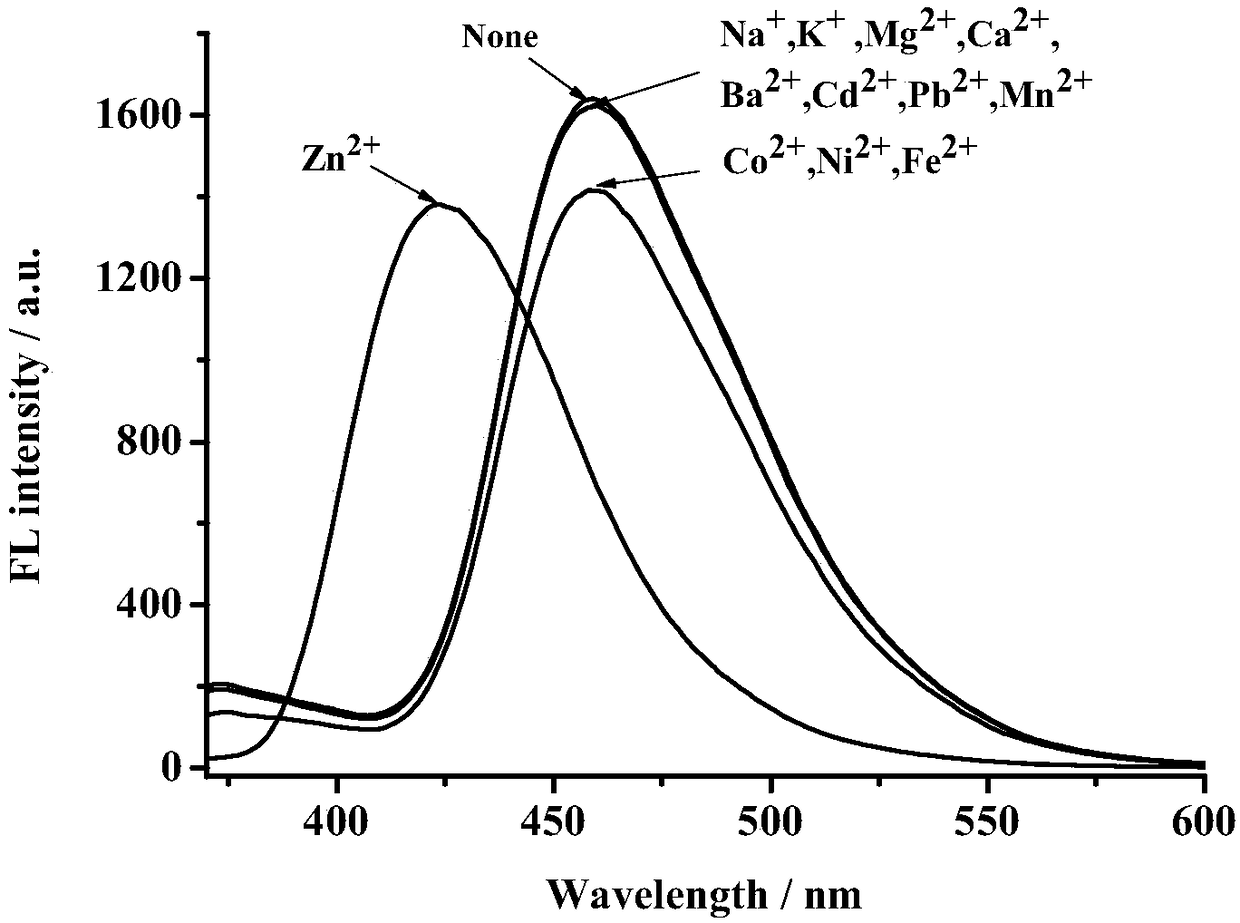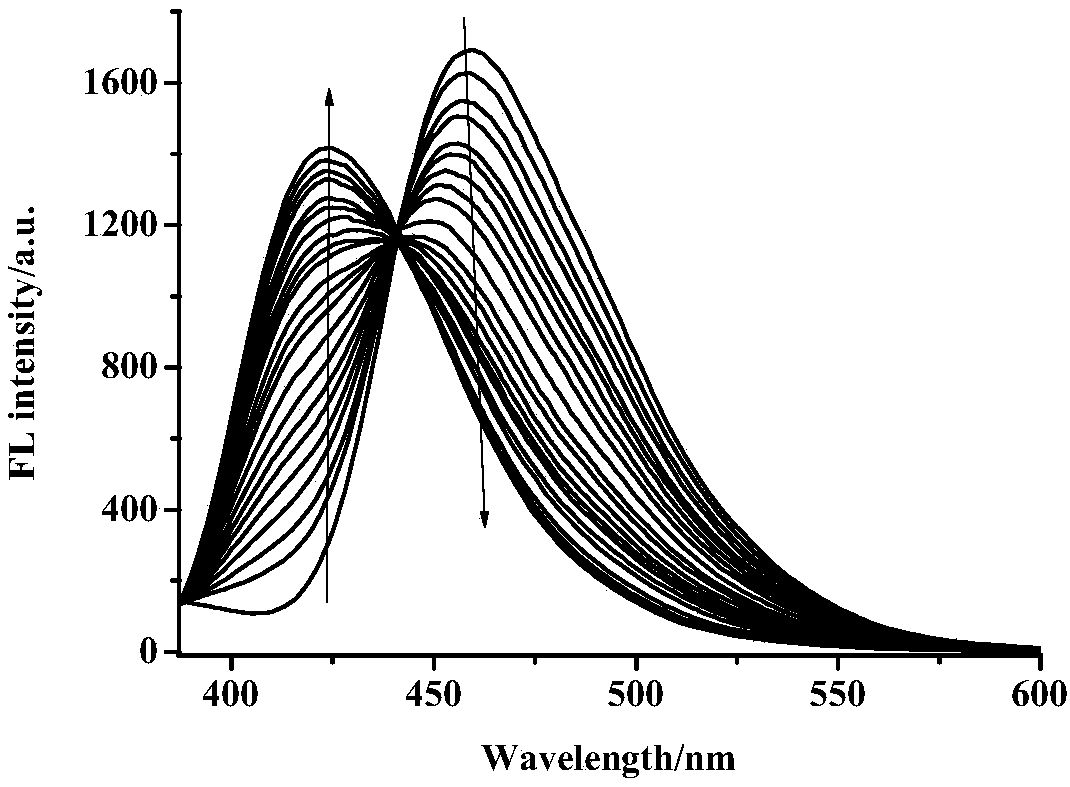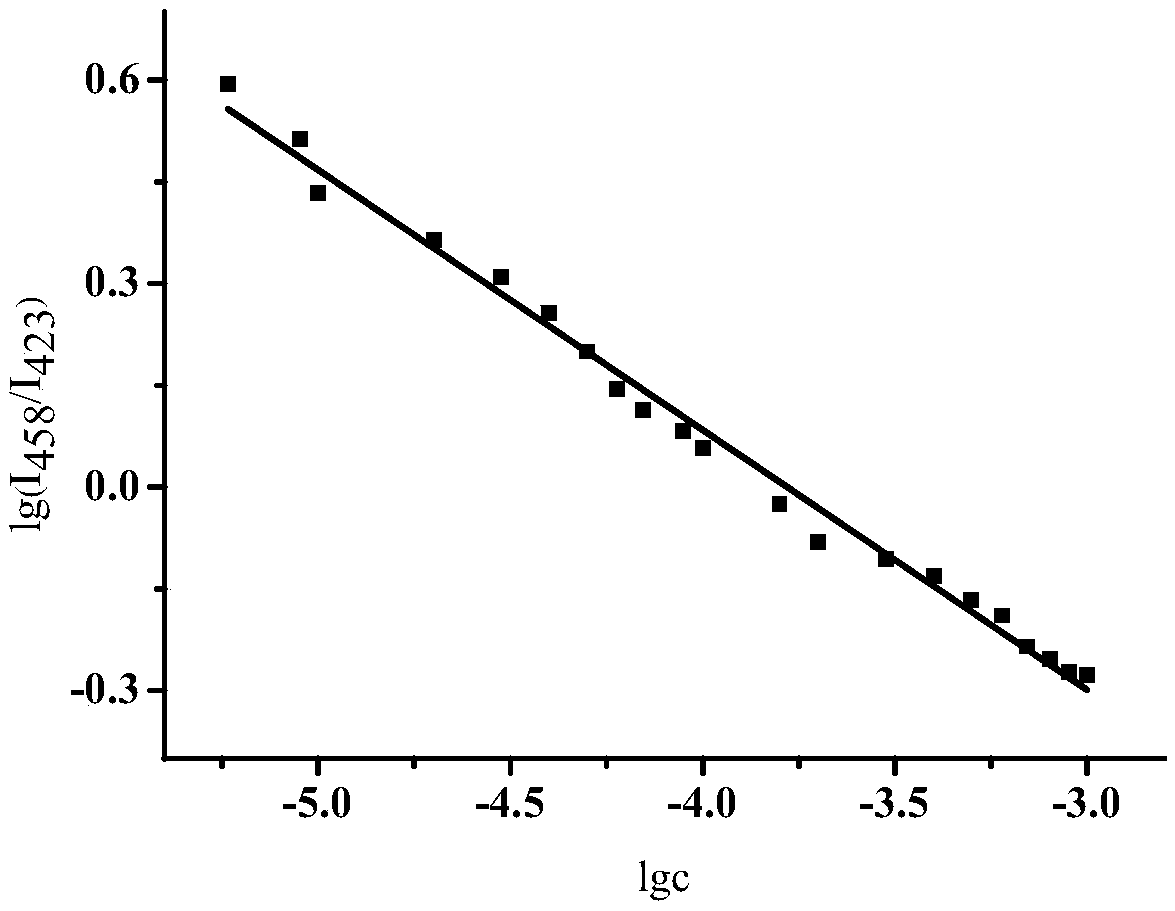Ratiometric fluorescent probe compound and method used for detecting zinc ion ratio in aqueous solution
A ratiometric fluorescent probe and compound technology, applied in the field of fluorescent probes, can solve problems such as poor water solubility, achieve the effects of increased sensitivity, elimination of system errors, and good sensitivity
- Summary
- Abstract
- Description
- Claims
- Application Information
AI Technical Summary
Problems solved by technology
Method used
Image
Examples
Embodiment 1
[0025] Add to 3mL the aqueous solution of probe compound N-(4-2'-benzoxazole-3-hydroxyphenyl)carbamoylpicoline chloride salt (concentration is 3×10 -5 mol / L) were added to 30 μL aqueous solution of different metal ions (concentration is 9×10 -2 mol / L), after fully mixing, measure the fluorescence absorption spectrum of each solution under the excitation wavelength of 328nm (such as figure 1 ). The results showed that the probe compound on Na + 、K + , Mg 2+ , Ca 2+ 、Ba 2+ 、Cd 2+ , Pb 2+ , Mn 2+ The response was weak, Co 2+ 、Ni 2+ , Fe 2+ Can slightly quench the fluorescence emission of the probe compound, while only Zn 2+ While the fluorescence emission peak at 458nm was quenched, a new peak appeared at 423nm, showing the characteristics of ratio fluorescence. Therefore, the probe compound has the ability to detect Zn 2+ Basic conditions for ratiometric fluorescent probes.
Embodiment 2
[0027] The preparation concentration was 1×10 -1 , 1×10 -2 , 1×10 -3 mol / L Zn 2+ aqueous solution. First, add 3 mL of the aqueous solution (3×10 - 5mol / L), successively drop the concentration of 1×10 -3 mol / L Zn 2+ 24, 3, 3 μL of aqueous solution, mixed thoroughly and then scanned under the excitation of 328nm excitation light; then add 3mL of the aqueous solution of the probe compound (3×10 -5 mol / L), successively drop the concentration of 1×10 -2 mol / L Zn 2+ 3 μL of aqueous solution, mixed thoroughly, and then scanned under the excitation of 328nm excitation light, added dropwise 10 times; finally, added 3 mL of the aqueous solution of the probe compound (3×10 -5 mol / L), successively drop the concentration of 1×10 -1 mol / L Zn 2+ 3 μL of aqueous solution, mixed thoroughly and then scanned under the excitation of 328nm excitation light, added dropwise 10 times (such as figure 2 ). With Zn 2+ With the increase of the concentration, the fluorescence peak intensity...
Embodiment 3
[0029] This embodiment examines probe compound to Zn 2+ Recognition selectivity. To 3mL aqueous solution of probe compound (concentration is 3×10 -5 mol / L) was added at a concentration of 9×10 -2 mol / L Zn 2+ 30 μL aqueous solution, and then add 30 μL Na + 、K + , Mg 2+ , Ca 2+ 、Ba 2+ , Mn 2+ , Fe 2+ 、Co 2+ 、Ni 2+ 、Cd 2+ or Pb 2+ Metal ion aqueous solution (concentration is 9×10 -2 mol / L), fully mixed and scanned under the excitation of 328nm excitation light, different metal ions and Zn 2+ The influence of coexistence on the fluorescence intensity of the mixed system is as follows: Figure 4 . The experimental results showed that the probe compound was used as a fluorescent probe for the determination of Zn in aqueous solution 2+ The sensitivity is high, the ions in other water interfere less with the determination results, and the results are stable and reliable.
PUM
 Login to View More
Login to View More Abstract
Description
Claims
Application Information
 Login to View More
Login to View More - R&D
- Intellectual Property
- Life Sciences
- Materials
- Tech Scout
- Unparalleled Data Quality
- Higher Quality Content
- 60% Fewer Hallucinations
Browse by: Latest US Patents, China's latest patents, Technical Efficacy Thesaurus, Application Domain, Technology Topic, Popular Technical Reports.
© 2025 PatSnap. All rights reserved.Legal|Privacy policy|Modern Slavery Act Transparency Statement|Sitemap|About US| Contact US: help@patsnap.com



